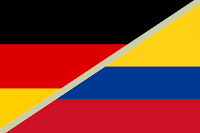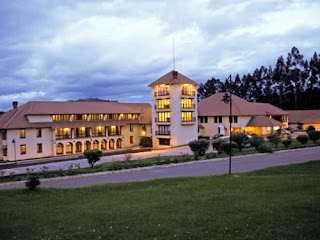Advertisements are a form of persuasion, an attempt to motivate the audience to do something, and military advertisements are no different. However, this is one of only a handful of similarities to the kinds of advertisements that are shown regularly on television. So, what exactly are military advertisements and how can they be defined? Let this question be an introduction to the topic. Apart from that, it is recommended to read the "official" introduction to the project here.
Content and Navigation
Click the ⇑ after each chapter to easily navigate back here.
Content and Navigation
Click the ⇑ after each chapter to easily navigate back here.
Defining military advertisements
Of course a definition would be easy with regards to content and advertiser, but what can be said about formal characteristics in relation to those of the well-established classifications, such as product advertisements, political ads or commercial advertisements? The question has to remain partly unanswered and the partial answer is imprecise. Military advertisements come under good-will ads, however they usually contain strong elements of the other categories as well: political, commercial and service ad. One could say they are a mixture of advertisement types with one main ingredient. Still, as with every advertiser the actual composition differs from advertiser to advertiser. Disassembling the two advertisements this essay will focus on for the most part will help to explain this idea. ⇑
Formal characteristics of military advertisements by an example
As already addressed in this previous post, this advertisement for the Colombian army is a good example for an ad that is mainly a good-will ad but also contains strong elements of politcal ads: by recapitulating Colombian history it reminds the audience of the army's role's importance, its good deeds (image advertising) and reaffirms political and social values of safety, solidarity and freedom.
As a country with much less (observable) need for the usage of heavily armed forces for self-defence, the German military focuses almost purely on good-will advertising. Rightfully so, as military actions that are not for self-defence are usually perceived as an offensive intrusion into another country rather than a move to deal with an abstract threat (terrorism) or as a way of stabilizing the country for instance. Apart from good-will as main ingredient, the advertising mixture of the German "Bundeswehr" ad contains a large portion of latent commercial elements. Only a few months before the ad was aired for the first time, German top politicans had raised a discussion about abolishing compulsory military service of young men. As a matter of fact, conscription was abolished the following year, giving the German military enough time to think of alternative ways to recruit new soldiers – the army's most important resource to keep its structure alive and working. Last but not least nationalism plays no role in the German ad, a big difference to the Colombian ad.
Concluding, a composition of the mixture depends on the audience the advertisement is aimed at, short: a society's culture. ⇑
In the Colombian ad the military clearly associates itself with past historic phases, highlighting their positive role in the events and thus claiming to have shaped Colombian history to the way it is today. It also talks about the army's future role, underlining its continuous importance for the nation til today. The recurring motive of jungle area serves as a clear floral association with Colombia one one hand and a clear assocation to the ongoing fights in Colombian jungle territory against guerilla troops. The constant showing of troops in these areas implies they are experienced and ready to engage in jungle warfare to a point where safety today is guaranteed. Of course it also shows the willingness to fight for the country's freedom. The last scene showing the soldiers in the river picks up the collective nature of Colombian society: teamwork. Somewhat epic music emphasizes the importance of the military's self-proclaimed role.
In the end the Colombian ad is much more specialized and focused on their audience than the German one. Germany's ad would work just as fine in other low-context cultures, because it uses no symbols that are unique to the country, unlike the Colombian ad showing historic dates, typical landscape and traditional uniforms. Hence the German ad is unexpectedly universal, unexpected because of the otherwise so clear and specific target audience being young Germans(!). ⇑
Learning about the countries' cultures helps understanding the marketing strategy, the thoughts behind the two advertisements. Even so, simply pointing out each country's characteristics will not bear any utile results, so both countries shall be compared along the way.
Concluding, a composition of the mixture depends on the audience the advertisement is aimed at, short: a society's culture. ⇑
Style, symbolism and content
Most content has already been presented and explained here and most of it will be mentioned again later on in this post, but in a different context. Let's still go over those points briefly anyway. It should help to find out how specialized these ads are in regards to the country and their target audience.In the Colombian ad the military clearly associates itself with past historic phases, highlighting their positive role in the events and thus claiming to have shaped Colombian history to the way it is today. It also talks about the army's future role, underlining its continuous importance for the nation til today. The recurring motive of jungle area serves as a clear floral association with Colombia one one hand and a clear assocation to the ongoing fights in Colombian jungle territory against guerilla troops. The constant showing of troops in these areas implies they are experienced and ready to engage in jungle warfare to a point where safety today is guaranteed. Of course it also shows the willingness to fight for the country's freedom. The last scene showing the soldiers in the river picks up the collective nature of Colombian society: teamwork. Somewhat epic music emphasizes the importance of the military's self-proclaimed role.
In the end the Colombian ad is much more specialized and focused on their audience than the German one. Germany's ad would work just as fine in other low-context cultures, because it uses no symbols that are unique to the country, unlike the Colombian ad showing historic dates, typical landscape and traditional uniforms. Hence the German ad is unexpectedly universal, unexpected because of the otherwise so clear and specific target audience being young Germans(!). ⇑
Cultural Characteristics of Both Countries
 | ||
| German and Colombian Flag. Via Wikimedia Commons. |
Germany, as well as Colombia, is a democratic country. Taking into account Colombia's tumultuous history of the recent past, it is safe to say that Germany is a much more stable democracy by far. Colombia has had a long history of fighting against drug cartels, guerilla warfare and political tensions with its neighbours as well as on national level, events recent and incisive enough to cause a high degree of collectivism in society still holding up with current generations. Children will usually live with their parents up to the age of about 28 and cultivate strong bonds even to remote relatives or stirps. While Germany has had its fair share of internal insecurities as well, these have by no means been as dramatic and far-reaching (concerning culture and nation) as those in Colombia. Today, Germany's society is an individualistic one, if one is to leave out immigrant minorities. Children are likely to leave their parents' home at an early age and gradually reduce contact while founding their own family.
Both of these cultural peculiarities are retrieved in both advertisements. The Colombian military uses the country's internal struggles as a reminder of the nation's common history and collective suffering, if you will, and simultaneously propagates the role it played in creating this society. Thus, the Colombian ad relies heavily on emotions and national pride in particular to work.
On the other hand, the German advertisement plays with the prospect of adventure and discovery, i.e. curiosity, by showing parachutists and fighter jet pilots among others. In an individualistic culture curiosity gives way to certainty in order to diminish social risks (where usually family serves as safety net). In the ad, the "Bundeswehr" tries to combine curiosity with social certainty to make a military carreer seem more attractive to young people concerned of their future. Furthermore adventure has long been a symbol of individualism: leaving the nest and dare to walk new paths. Of course, on a son whose parents work for the military, the ad won't have the same effect, but he is likely to get in contact with the military through more effective channels anyway. ⇑
The Military's Role
As one might assume already, the German's military image is not the best, hence there usually being a reason for image campaigning. Apart from being perceived as a force intruding other countries, seldom military maneuvers done within Germany itself are quick to remind many Germans of authoritarian states and Germany's nationalist past. Rarely are there incidents where military help is seen as needed and then help usually "only" involves disaster management. |
| Military Club "Sochagota" in Paipa, Colombia. © El Portal |
Communication Online
| Bundeswehr-Booth at the AMI-Fair Leipzig. © Bundeswehr/Plehn |
Particularly interesting however, are their online presences. In a direct comparison, the Colombian website seems to cater to young audiences much better than the German site. The Colombian site works with a lot of images on their main page and a slideshow accompanying their list of news articles. Scrolling down allows for a quick overview of the military's array of communication channels and their social media presences on Facebook, Twitter, etc. It even features an English version of the site and offers a "share" option below their articles.
On the other hand the site of the "Bundeswehr" is much more text-based, information-heavy but thus, a bit easier to navigate as it's layout is cleaner and more organized. However, their social media buttons are hidden away in a tiny bar in the top right corner and direct sharing of articles only works via mail. Special attention should be paid to the site's part on military career. Apparently the site creators felt the career-part deserved its own site, divided into civil and military career, thus so more information can be found conveniently in an optically much more appealing fashion. ⇑
Conclusion
There really is not much to say. In the end the Colombian approach is much more specialized than the German one, even though in this context it would be wrong to speak of a standardized approach. If the military was to do advertisements in different countries, the German ad would definitely be a good choice, but fortunately it's not the case. What's left to ask is why Germany chose this approach. It may be hard to work with symbolism, because of the nationalist past, but the result was probably much more cautious than it had to be. ⇑
